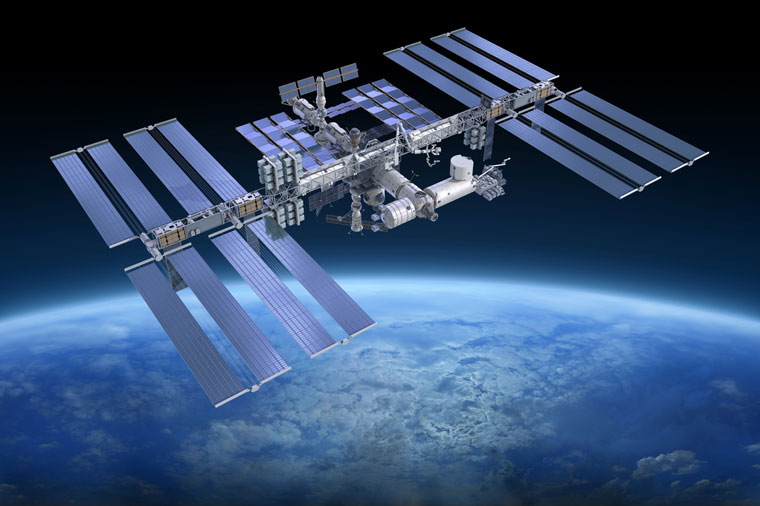The capability to grow nutritious, palatable food for crew consumption during spaceflight has the potential to provide health promoting, bioavailable nutrients, enhance the dietary experience, and reduce launch mass as space missions move toward longer-duration exploration missions. However, studies of edible produce during spaceflight have been limited, leaving a significant knowledge gap in the methods required to grow safe, acceptable, nutritious crops for consumption in microgravity. The Veggie vegetable-production system on the International Space Station (ISS) offers an opportunity to develop a “pick-and-eat” fresh vegetable component to the ISS food system as a first step to bio-regenerative supplemental food production.
For this study, salad plants are grown in the Veggie unit during spaceflight, focusing on the impact of light quality and fertilizer formulation on crop morphology, edible biomass yield, microbial food safety, organoleptic acceptability, nutritional value, and behavioral health benefits of the fresh produce. The first phase of the project involves flight tests (Veg-04A, for a 28-day grow-out, and Veg-04B, for a 56-day grow-out) using Mizuna mustard, a leafy green crop previously down-selected through a series of research tests as a suitable candidate. The second phase focuses on growth of dwarf tomatoes (Veg-05). Flight definition testing has assessed different red-to-blue light recipes and fertilizer formulations for optimum growth of these crops on the ground. Two light treatments with different red-to-blue ratios are tested for each crop on the ISS. This experiment is expected to help define light colors, levels, and horticultural best practices to achieve high yields of safe, nutritious leafy greens and tomatoes to supplement a space diet of pre-packaged food. A duplicate ground-study provides a comparison to the plants grown on ISS to determine the effects of spaceflight.
Each crop grows in two separate Veggie chambers under two different LED lighting conditions. Six plants are grown using plant “pillows” (bags with a wicking surface containing soilless substrate and fertilizer) in each of the two Veggies. The duration of the grow-out is 28 days for Veg-04A and 56 days for the future Veg-04B. Crew members tend to the plants by opening wicks to help seedlings emerge, providing water, thinning the seedlings, and monitoring health and progress (via inspection and taking photos which are downlinked to the ground team).
Plants in space have potential countermeasure benefits. Fresh vegetables offer flavor, sensory, and texture variety to the pre-packaged ISS diet. Taking care of the plants provides sensory stimulation, and helps mark the passage of time in the confined and isolated environment of ISS.
The Pick-and-Eat Salad-Crop Productivity, Nutritional Value, and Acceptability to Supplement the ISS Food System (Veg-04A) experiment investigates both the impact of different red and blue light ratios on the crop morphology, edible biomass yield, organoleptic acceptability, nutritional value, and microbial food safety of plants grown in small on-orbit growth chambers known as Veggie units, and the psychological impacts that plants in space, and their cultivation, have on the crew.
Soilless substrate, fertilizer, and seeds of mizuna, a leafy green salad vegetable, are launched inside small bags called plant pillows. Once on-orbit, six pillows are installed into each of two Veggie chambers, with each chamber programmed to provide different LED lighting conditions. Crew members tend to the plants by opening wicks to help seedlings emerge, providing water, thinning the seedlings, and monitoring health and progress (via inspection and taking photos which are downlinked to the ground team).
After 28 days of growth, the mizuna plants are harvested. Some of the plant leaves are wrapped in foil and then frozen for later return/analysis. The mass of the remaining leaves is measured by the crew and then sanitized. Subsequently, crew members complete an organoleptic assessment of the produce grown under each of the two lighting conditions by tasting the produce and documenting its sensory qualities (e.g., flavor, color, appearance, aroma, texture, taste). Produce remaining after the organoleptic assessments are complete may be consumed by the crew. Swabs of plant growth hardware are also obtained and frozen for subsequent return to Earth and postflight microbial analysis.
Tagged with horticulture, lightED